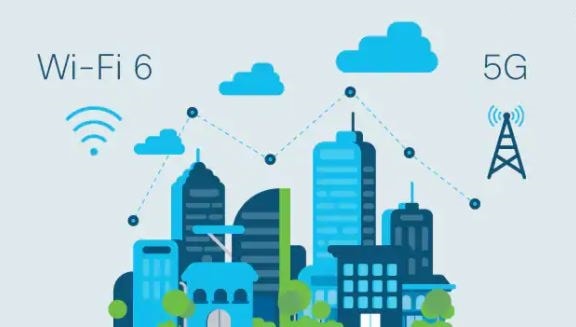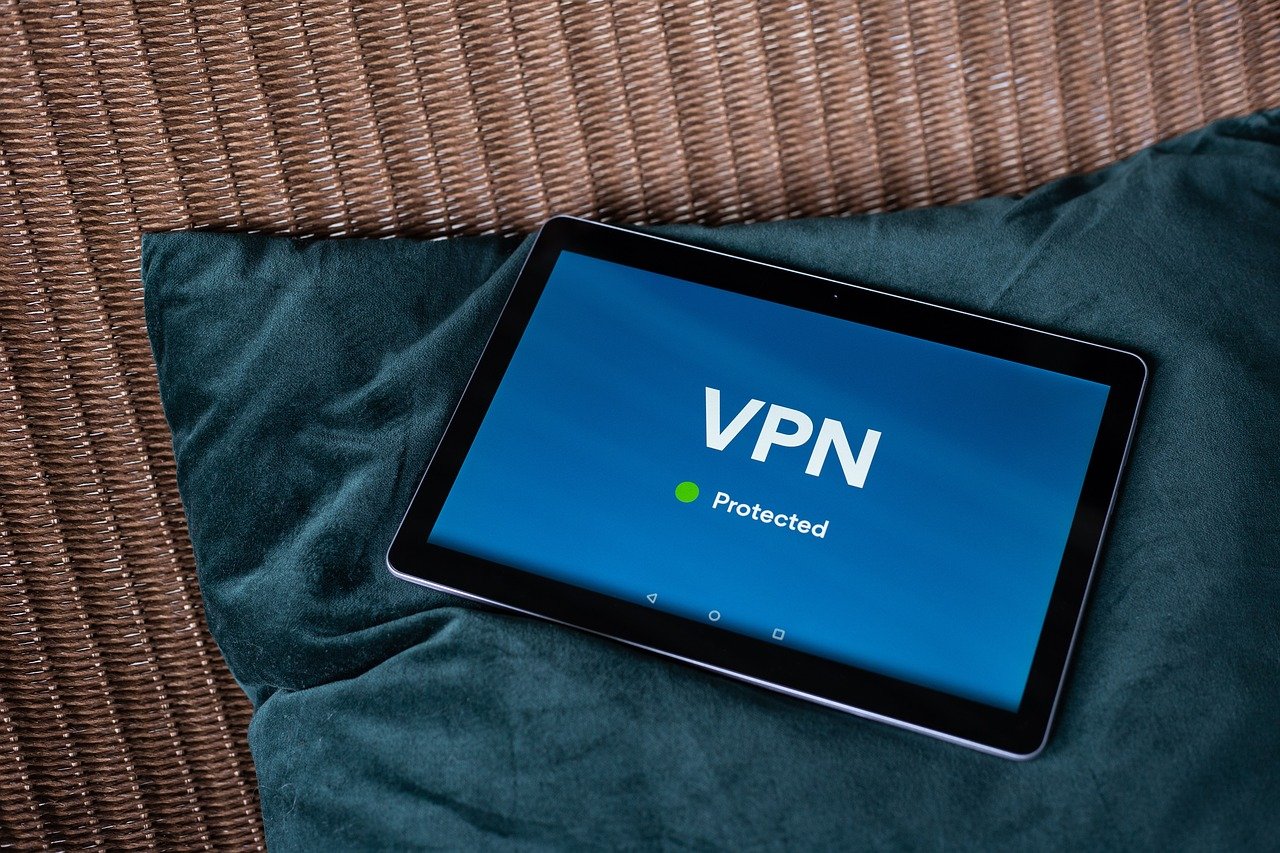The world is currently entering the era of 5G from 3G and 4G, and while it has not necessarily brought about the mobile revolution some expected, it could really do so in the next few years. The current 5G we have today is better than 4G, but it only delivers minimal improvements to download speeds. Still, eventually, it should dramatically improve download speeds, nearly eliminate latency, and reduce congestion on mobile networks. 5G (5G Vs. WiFi) is the next generation of wireless network technology that will fuel innovation and transform the way we live, work, and play now.
5G Vs. WiFi
5G mobile networks can be built in different ways from multiple bands of wavelength spectrum: low-band, mid-band, and high-band. High-band millimeter-wave frequencies have greater bandwidth available to carry more data in dense urban areas but require cell sites to be nearby and have limited penetration in buildings. Mid-band balances speed and range, providing broader coverage than high-band. And it’s less impacted by buildings. Like our powerful 600MHz spectrum, low-band travels farther than other bands—over hundreds of square miles—and can pass through more obstacles, providing better coverage and a stronger signal both indoors and out.
Furthermore, 5G is going to give your Wi-Fi connection a run for its money. While Wi-Fi and 5G will compete against each other, all signs point to us likely needing both technologies to take advantage of the internet of tomorrow fully. So while 5G will undoubtedly come in handy in many situations, Wi-Fi, which is still being developed and updated, will be useful in other situations. And they could end up working together to improve your wireless network, such as in the case of 5G home internet.
Difference Between 5G and WiFi
5G is the covered term for the fifth generation of cellular/mobile network technology, and it encompasses a lot of different elements. Mobile networks basically rely on licensed spectrum bands, which are auctioned off to the highest bidder. Carriers such as Verizon and AT&T have to pay to use those bands. To roll out coverage, they have to build a network of connected base stations capable of sending out a strong enough signal for the network to serve multiple people at once.
5G and WiFi
Meanwhile, WiFi relies on an unlicensed spectrum that’s free for anyone to use but has a relatively weak signal. We pay an internet service provider (ISP) to deliver the internet to our door. And then we use a router to fill our house with WiFi. Using the same WiFi frequency band as your neighbors can be a problem, especially if you live in a very densely populated area with limited bandwidth. The two frequencies that WiFi uses are 2.4GHz and 5GHz. In simple terms, 2.4GHz has a lower potential top speed but penetrates better. So it has a longer range than the higher frequency, 5GHz, which can deliver faster speeds but doesn’t penetrate things like walls as easily. It’s worth noting that 5GHz WiFi has absolutely nothing to do with 5G mobile networks. However, Verizon 5G home internet does cross that boundary.
Furthermore, most of us rely on a WiFi network at home or in the office or coffee shops and mobile networks when we step out the front door and move out of range of the router in everyday life. Our phones will switch automatically, and we don’t give it any thought; the important thing has a good connection at all times. That scenario will continue to be the case for most people as 5G continues to roll out. The difference is that both mobile networks and WiFi are going to see performance improve.
The benefit of 5G
The prospect of download speeds between 1Gbps and 10Gbps and upload speed, or latency, of just 1 millisecond (ms) has people excited about a more robust 5G network. Those speeds are comparable to what you would see from a physical, wired connection. However, the reality is we won’t typically get anywhere near the theoretical top speeds. And even if we did, it wouldn’t be for at least a few more years.
The actual speed of the 5G connection will depend on many factors, including where you are, what network you are connecting to, how many other people are connecting, and your connected device. The aim is to achieve a minimum download speed of 50Mbps and a low latency of 10ms. That will represent a major improvement over current average speeds, but just as with 4G LTE, 5G coverage will expand slowly. Currently, we are at an average download speed of around 57Mbps, according to a study from Speedcheck. That means that the minimum is far less than that. It’s also going to work hand-in-hand with not just WiFi but also earlier generations of mobile technology. So 4G LTE will continue to be offered as a fallback and will likely keep evolving and getting faster.
The benefit of WiFi 6

The next generation of the Wi-Fi standard is WiFi 6, also known as 802.11ax, the latest step in a journey of nonstop innovation. The standard builds on the strengths of 802.11ac while adding efficiency, flexibility, and scalability that allows new and existing networks increased speed and capacity with next-generation applications. The Institute of Electrical and Electronics Engineers (IEEE) proposed the WiFi 6 standard to couple the freedom. And the high speed of Gigabit Ethernet wireless with the reliability and predictability found in licensed radio.
We all know that WiFi has traditionally been very confusing in terms of the naming conventions for standards. It went from 802.11b to 802.11a, 802.11g, 802.11n, and then 802.11ac. The WiFi Alliance (and the industry at large) has accepted the need for something less perplexing, so the next standard, 802.11ax, is marketed as Wi-Fi 6. This simpler naming convention is also being applied retroactively, so 802.11ac will become WiFi 5, and so on.
The new WiFi 6 standard offers speeds faster speed, at least four times faster than WiFi 5, under certain conditions. Still, it also brings improvements in efficiency and capacity designed to cope with the growing number of internet-connected wireless devices in the average home. Just like 5G, Wi-Fi 6 will complement, not replace, existing WiFi standards. Especially because actual devices will need to add support for newer versions of WiFi, too. Theoretically, maximum WiFi 6 speeds top out at around 9.6Gbps. But you will likely never hit that in real-world use with your internet connection.
5G Service or WiFi 6 Requirements
At this point, both 5G and WiFi 6 are pretty widely available. On the 5G side, carriers have now rolled out nationwide 5G networks built on the Sub-6 spectrum. They are set to continue expanding that network and adding mid-band and high-band spectrum to complement it. To get access to WiFi 6, you will need a router that supports the standard, and you will need a 5G phone or a device that supports it, too. Most newer smartphones support both 5G and WiFi 6, especially when it comes to higher-end devices. Eventually, all phones, computers, and so on will support both standards.
Internet Connectivity
As more and more routers have WiFi 6 built into them, and more and more cell towers beam out 5G networks, the internet speeds, both at home and on the go, will get faster, with lower latency. More technologies and 5G smartphones will spring up, too. As 4G-enabled advances like online mobile gaming and mobile streaming, 5G speed will enable a range of new use cases, like connected cars. Of course, only time will tell what the future really holds for wireless technology and internet connectivity. But expect to be hearing the terms 5G and WiFi 6 a whole lot more in the next few years. Eventually, slower speeds will be a thing of the past.
WiFi 6 allows enterprises and service providers to support new and emerging applications on the same wireless LAN (WLAN) infrastructure while delivering a higher grade of service to older applications. This scenario sets the stage for new business models and increased WiFi adoption.












